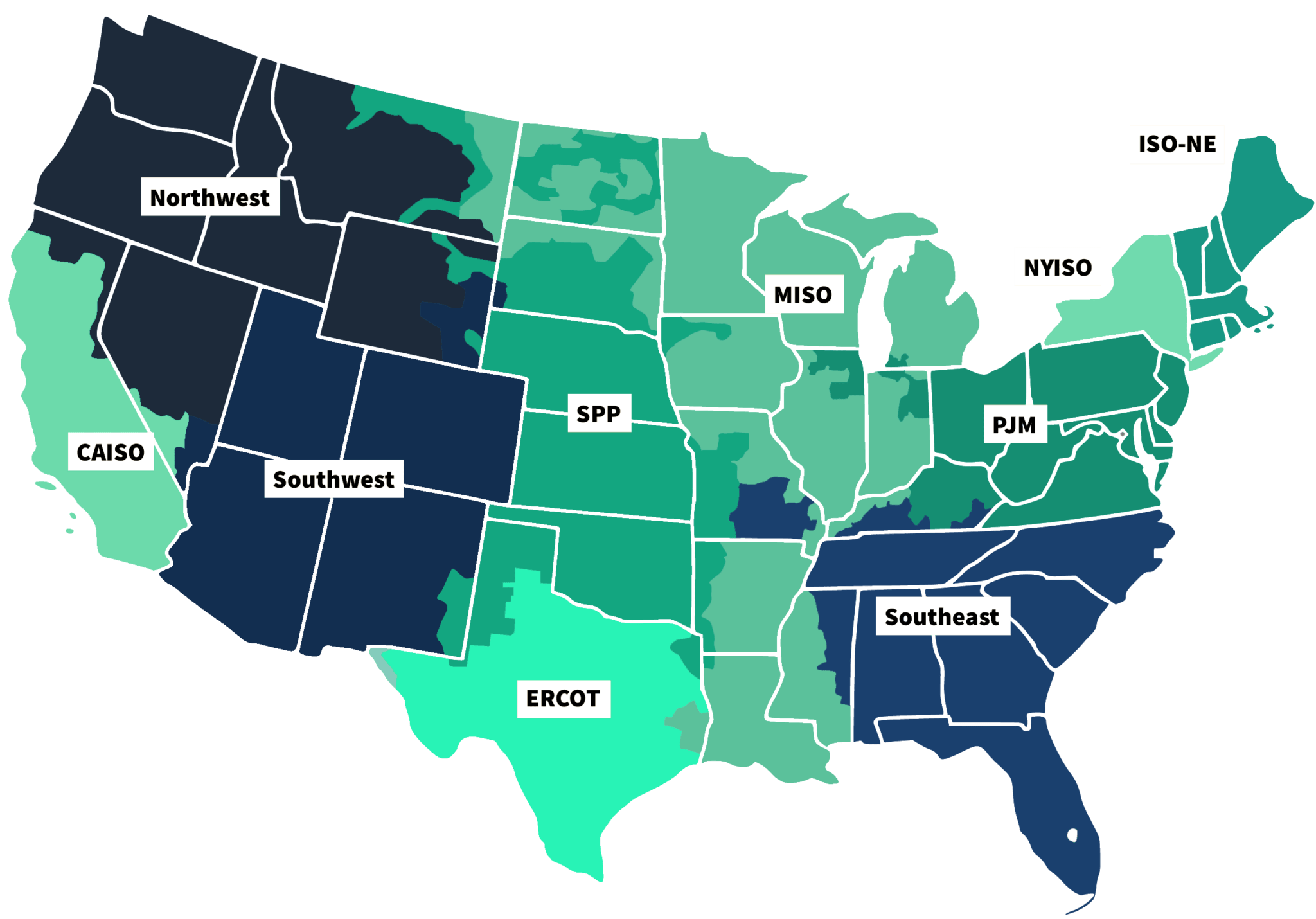U.S.A Power System
The power system in the USA is a vast and intricate network that generates, transmits, and distributes electricity to homes, businesses, and industries across the country. It consists of:
-
Power Generation: The USA utilizes various sources for electricity generation, including coal, natural gas, nuclear, hydroelectric, wind, solar, and other renewable sources. These power plants are located throughout the country, both near population centers and in remote areas with abundant natural resources.
-
Transmission: High-voltage transmission lines carry electricity from power plants to local distribution networks over long distances. These transmission lines form the backbone of the power grid and are crucial for ensuring the reliable delivery of electricity.
-
Distribution: Distribution networks consist of medium and low-voltage power lines, substations, and transformers that deliver electricity from transmission lines to end-users, such as homes, businesses, and industrial facilities. These networks are operated by utility companies, cooperatives, and municipal entities.
-
Grid Operations: The power grid is managed and operated by regional grid operators known as Independent System Operators (ISOs) or Regional Transmission Organizations (RTOs). They oversee the flow of electricity, maintain grid stability, and ensure reliability by balancing supply and demand in real-time.
-
Regulation: The power industry in the USA is regulated at both the federal and state levels. Federal agencies like the Federal Energy Regulatory Commission (FERC) oversee interstate transmission and wholesale electricity markets, while state regulatory commissions regulate retail rates, service quality, and other aspects of the power industry within their jurisdictions.
Wholesale electricity markets facilitate the buying and selling of electricity between generators, utilities, and other market participants. These markets are regulated by the Federal Energy Regulatory Commission (FERC) and operate in various regions across the country. Examples include energy markets, capacity markets, and ancillary services markets.
What is RTO/ISO?
In 1996, the Federal Energy Regulatory Commission (FERC) took action to increase competition in the electricity market and ensure there was no discrimination regarding transmission access. The result was FERC Order 888and FERC Order 889, which established a series of Independent System Operators (ISOs).
In addition to changing market economics and improving access, ISOs were designed to reduce government oversight and ensure grid reliability. Essentially, these organizations run the high-voltage transmission grid for transmission owners in their respective regions.
In 1999, FERC issued Order 2000, encouraging smaller transmission entities to join Regional Transmission Organizations (RTOs) voluntarily. RTOs run the transmission grid on a regional basis across North America and Canada. The order included specific technical requirements an operator must meet to be considered a FERC-approved RTO.
ISOs/RTOs were formed to reduce government oversight, increase market competition, and to advocate for economic efficiency, grid reliability, and police all market participants to ensure their actions are unbiased and neutral.
Specifically, ISOs and RTOs are responsible for the following:
-
Dispatching power plants and planning for expansion & new resources within its region
-
The management and relief of congestion
-
Controlling transmission facilities for voltage, monitoring, and switching in and out of service
-
Keeping the power grid balanced between generation and load
-
Forecasting and scheduling generation to ensure sufficient generation and backup power is in place to meet demand
-
Providing the platform for the electricity market transactions and managing the process
The only difference between an ISO and an RTO in today’s market is the size of its footprint and the way it prices services. Because each ISO and RTO operates independently, each sets prices based on specific supply and capacity tags. Other than that, the two organizations serve the same purpose.
Referrence:
https://www.ferc.gov/media/energy-primer-handbook-energy-market-basics
https://www.rff.org/publications/explainers/us-electricity-markets-101/
https://www.cfr.org/backgrounder/how-does-us-power-grid-work
https://www.eia.gov/energyexplained/electricity/delivery-to-consumers.php
https://www.pcienergysolutions.com/2022/11/29/whats-the-difference-between-iso-and-rto/
This article is a part of the class “751447 SEM IN CUR ECON PROB”
Supervised by Asst. Prof. Napon Honsakulvasu
Faculty of Economics, Chiang Mai University
This ariticle was written by Naphat Phasang 641615029.